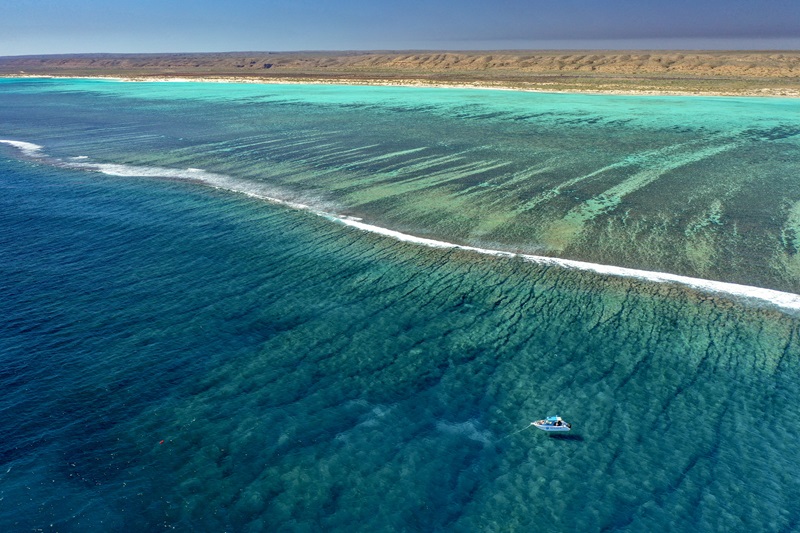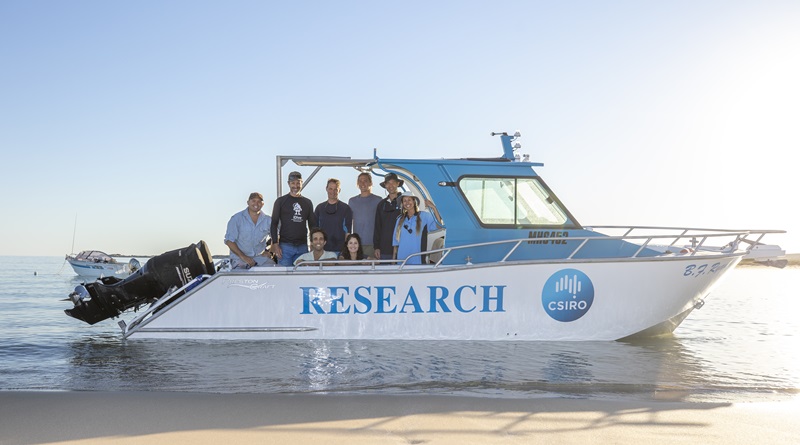Key points
- For the past decade, the Ningaloo Outlook program has been quietly transforming our understanding of one of Australia's most iconic marine ecosystems.
- Scientists conducted more than 65 expeditions, tagged hundreds of marine animals, mapped deep reefs and engaged thousands of community members.
- Ningaloo Outlook leaves a legacy of pioneering research that has fundamentally transformed our understanding of this World Heritage-listed ecosystem.
For the past decade, the Ningaloo Outlook program has been quietly transforming our understanding of one of Australia's most iconic marine ecosystems.
Over 10 years, scientists conducted more than 65 expeditions, tagged hundreds of marine animals, mapped deep reefs and engaged thousands of community members. The result? A treasure trove of scientific insights that has improved our understanding of Ningaloo reef and its iconic inhabitants.
Launched in 2015 as a partnership between CSIRO and BHP, and later joined by Woodside, this $12.5 million initiative set out to explore the rich biodiversity of the Ningaloo Coast in Western Australia, a UNESCO World Heritage site renowned for its coral reefs, whale sharks and nesting turtles.
A program of research powered by people
Beyond the science, Ningaloo Outlook invested in people. It supported seven PhD students, engaged with more than 2,000 community members, and partnered with Indigenous rangers in fieldwork. Local students, teachers, community members and tourists joined the effort, turning science into a shared story. Here are some highlights from the Ningaloo Outlook program.
Whether you're a marine science enthusiast, a conservation advocate or simply curious about what lies beneath the waves, these findings offer a glimpse into the power of long-term research.
Expanding scientific frontiers
Ningaloo Outlook research extended coral, fish and debris monitoring from nearshore zones to understudied offshore areas.

Ningaloo's shallow reefs are resilient - but not invincible
Although Ningaloo may avoid frequent severe bleaching by 2040, the 2025 marine heatwave caused record-low coral cover, with ongoing losses driven by drupella snails, disease and intensified bleaching impacts.

Deep reefs are functionally important
More than 100 km of deep reef were surveyed using Autonomous Underwater Vehicles and Remotely Operated Vehicles.
Researchers discovered ecologically important deep reef habitats at Ningaloo, including the world's largest known aggregation of a single mushroom coral species, highlighting the need to protect these unique, little-known ecosystems.

Turtles travel far to nest but otherwise stay at home
More than 450 turtles were tagged using flipper, acoustic and satellite tags.
Green turtles that nest at Ningaloo arrive from far away (sometimes over 1,000 km away), while resident turtles typically stay within very small areas, moving from shallow to deeper parts of the lagoon as they grow.
Ningaloo's turtles travel hundreds of kilometres to the Pilbara or beyond to nest, making journeys that last several months.

Whale sharks are regular visitors – but come with surprises
Whale sharks tagged at Ningaloo travelled up to 3,500 km before returning to Ningaloo, with females leaving earlier and venturing farther than males.
Genetics revealed a single Indian Ocean adult whale shark population, with individuals more than 8,000 km apart sharing the same parents.

Coastal sharks make long-distance moves for mating
Coastal sharks (lemon shark, grey reef and black tip reef sharks) had home ranges of less than 10 km2 but undertook seasonal movements up to 140 km during mating and pupping season.
Technology transformed marine research
Use of drones, tow video, AI algorithms, satellite tags, ultrasound and remote video revolutionised data collection.
Innovative tools unlocked access to deep, remote habitats and made it possible to answer complex ecological questions at scale.

Citizen science and community engagement matter
More than 2,000 people involved in engagement activities.
Local schools, Indigenous rangers and community members contributed to data collection and awareness.

A legacy that flows on
Ningaloo Outlook leaves a legacy built on a decade of dedicated science, deep partnerships and community engagement. From pioneering research on deep reef habitats to new insights into the journeys of turtles and whale sharks, the program has fundamentally transformed our understanding of this World Heritage-listed ecosystem.
At its heart, Ningaloo Outlook shows what's possible when science is sustained, collaborative and grounded in place, delivering insights that empower conservation and inspire future custodians. To get a closer look at how the science unfolded over the past decade, watch the highlights video .







